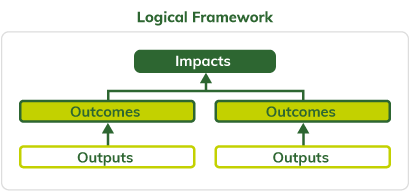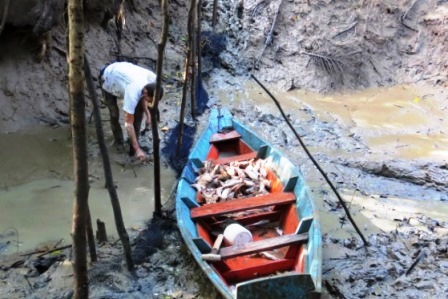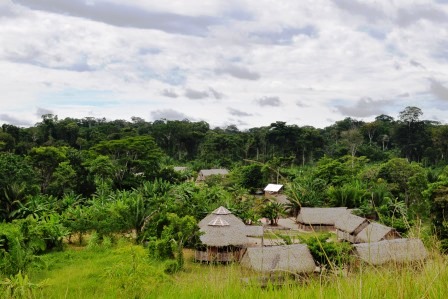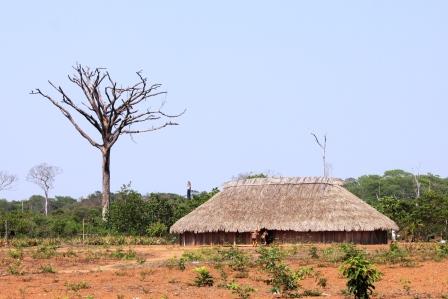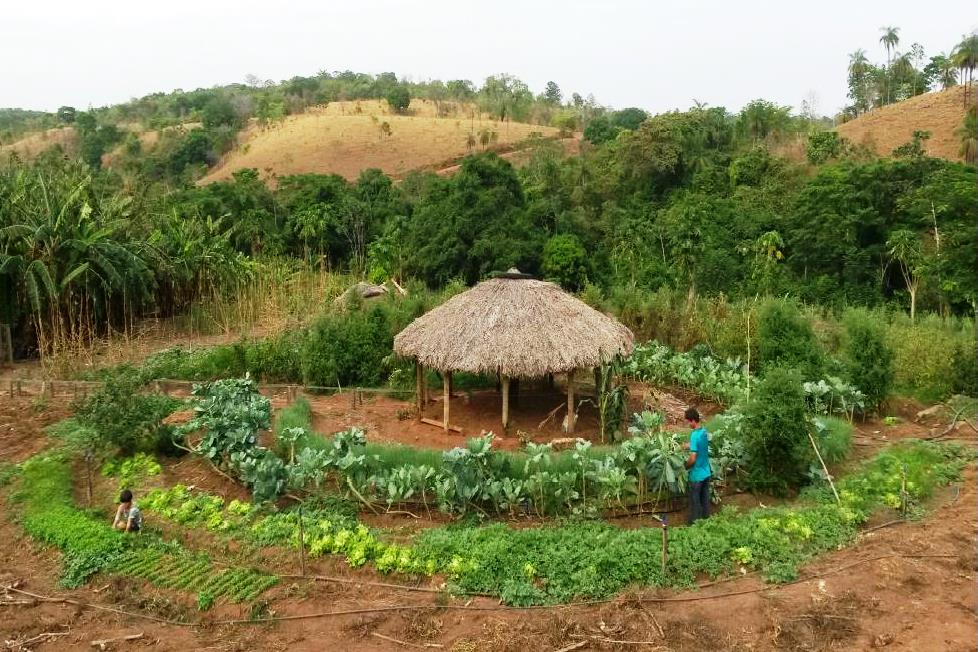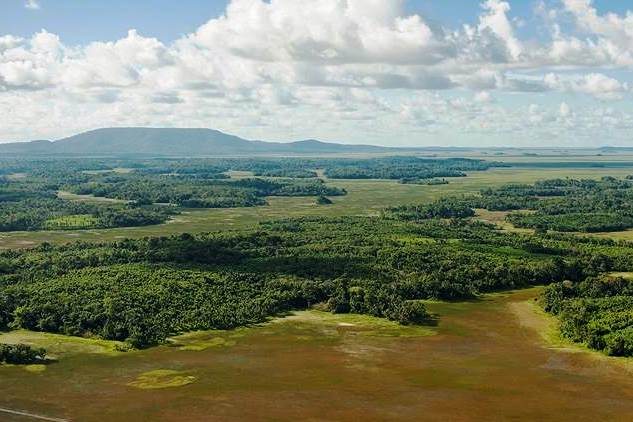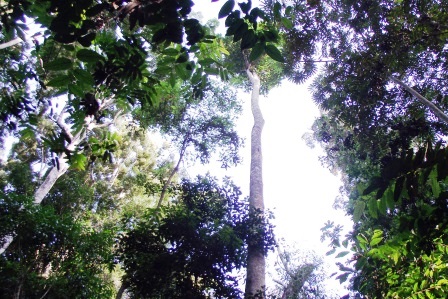Institutional and administrative aspects
Preventing and combating forest fires and deforestation depends on integrated action of public bodies at several government levels, with the necessary mobilization of civil society. The complete execution of this project required coordination and partnership with several important actors, who, together with the CBMMT, enabled the execution of the activities of this operation and, consequently, the achievement of its results.
The Sorriso Operations Base was built in partnership with the municipal government, with resources from the Municipal Department of Infrastructure and Logistics (SINFRA) and the Municipal Public Security Council. In addition, the private sector of Sorriso contributed with the furniture that will be used by the military.
The nondegree graduate course in forest fire prevention, control and combat was also made possible through a technical cooperation agreement between the State Management Department (SEGES), which oversees the School of Government, and the State Public Security Department (SESP), which oversees the CBMMT.
An agreement was also signed with SEMA, which funded, as of 2015, part of the forest fire prevention and control activities carried out by BEA, of CBMMT.
Finally, technical cooperation agreements were signed with local governments, which allowed the structuring of mixed municipal brigades in 2015 (Claudia, Campo Novo do Parecis, Sapezal and Sinop) and 2016 (Aripuanã, Claudia, Comodoro, Porto Esperidião, Sapezal and Sinop). The mixed municipal brigade is a new concept based on integrated efforts in which state, city, rural companies and professional associations make commitments to structure the first response to forest fires in municipalities that have no military fire brigade units. The brigade comprises two military firefighters and at least six firefighters hired exclusively or transferred from the municipal brigade.
Indicators of results and impacts
The project’s activities contributed to the results of the “monitoring and control” component (2) of the Amazon Fund Logical Framework.
Monitoring and Control Component (2)
Outcome 2.1: CBMMT in Sorriso better structured to monitor and combat deforestation caused by forest fires and illegal burnings.
The main indicators agreed for monitoring this objective were:
- Number of trained staff at CBMMT and partner bodies effectively using acquired knowledge (impact indicator)
It was verified that 45 managers at CBMMT and partner bodies that took graduate-level courses in environmental science are effectively using the knowledge they acquired. In addition, 774 staff members of CBMMT and partner bodies received instruction, 395 in 2015, 251 in 2016 and 128 in 2017. Although such training is not necessarily a product of the project, it is directly related to activities performed by BEA, which was structured with the support of the Amazon Fund.
- Number of trained pilots effectively using acquired knowledge (impact indicator)
The project supported the training of five pilots, four of whom are currently using the acquired knowledge. One of them is qualified to fly aircraft in forest fire combat missions.
- Spread of forest or rural fire prevention techniques (product indicator)
During the project, forest or rural fire prevention techniques were spread through the training of 330 civilian firefighters. These skills are not actually part of the project’s activities, yet they resulted from the structuring of BEA.
- Number of hot spots (impact indicator)
In 2017, 5,701 hot spots were counted in the region covered by the project. The baseline of this indicator was 5,577 hot spots, based on the average number of hot spots in the municipalities of the region covered by the project in the ten years prior to 2012, the first year of project implementation. Therefore, it was found that during the project implementation period there was a slight increase in the number of hot spots in the region.
It is important to note that the growth or drop in the number of hot spots in the state of Mato Grosso is especially influenced by meteorological issues, varying greatly from one year to the next due to the duration of dry periods. However, the project worked directly to prevent and combat forest fires, which contributes to reduce the number of hot spots. In this context, the indicator under analysis is not enough to assess the effectiveness of the project supported by the Amazon Fund, although it is a point of reference for other project indicators.
- Number of hot spots verified by the CBMMT (impact indicator)
In 2017, 3,869 hot spots were verified in the area covered by the project. In the previous three years, 2,710 hot spots had been verified (annual average), which shows a 42% growth in the capacity of in loco verification of hot spots. This variation clearly shows the increase of the Fire Brigade’s response capacity thanks to the project’s interventions.
- Number of forest fires or unauthorized burnings directly combated by the CBMMT (impact indicator)
In 2017, 851 forest fires were combated, and in the previous three years 306 forest fires had been combated (annual average), which shows a 178% increase in the capacity to combat forest fires and unauthorized burnings. This indicator also demonstrates that since the implementation of the Amazon Fund project, firefighters in the state of Mato Grosso have systematically expanded their action in combating forest fires.
Risks and lessons learned
All outputs were delivered and there was progress in all indicators of effectiveness. It should be noted that prior to the start of the project, data on verified and combated hot spots were not even gathered by CBMMT, which indicates that the adoption of monitoring techniques and effectiveness evaluation is one of the positive aspects being incorporated by military brigades in the Amazon Region as a result of the experience with the support of the Amazon Fund.
However, it is important to remember that the project’s term was significantly extended. CBMMT had problems carrying out the bidding procedures for some items of the project and executing complementary funding by the state. To be concluded, the project relied on important partnerships with other state and municipal bodies in the region, as detailed in the item “Institutional and administrative aspects.” These partnerships, although relevant, had not been properly linked to the project at the analysis stage, which led to delays and the relocation of the operations base from Sinop to Sorriso. The graduate-level course also required state support and was made possible by the School of Government after failed attempts in the bidding process.
It is believed that the lack of a dedicated structure for project management is one of the factors that contributed to the operational difficulties faced.
Therefore, an important lesson learned is that when analyzing projects with public sector bodies, it should be considered that their teams are not necessarily capable of managing operations of this kind. Thus, it is important to establish longer terms than usual and ensure that the most important partners are already properly linked to the project and committed to their obligations.
Sustainability of results
Long-term sustainability of the results achieved with the support of the Amazon Fund depends mainly on the budgetary conditions of the state of Mato Grosso, responsible for maintaining the main equipment purchased under the project, as well as for providing resources to fund CBMMT.
In periods of fiscal crisis, such as the one currently experienced by most Brazilian states, the strong contraction of the national economy places restraints on the budgets of government bodies. When excessively prolonged, this may undermine the results achieved by the project.
It should be stressed that the training and qualifications resulting from the project tend to have a longer lasting and potentially broader effect considering the spread of knowledge that happens naturally in organizations, regardless of new contributions of public funds.


